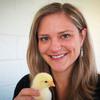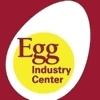Explore all the information on
Poultry lighting
Light is an essential aspect of poultry production. In most housing systems, artificial light is utilized to maximize production in pullets, layers and breeders. Today, a variety of different bulbs are available to illuminate the inside of a poultry house, all of which have benefits and shortcomings. Understanding the different lighting options available for poultry, as well as the terminology and management of light, is essential to achieve the best production. Light is critical for egg production and pullet growth. Domestic poultry see and respond to a different range of light color spectrum and have different spectral intensity responses than humans. While humans respond to light from around 400–750 nm, chickens can see UV-A light (315–400 nm) in addition to 400–750 nm. Additionally, the magnitude of sensitivity for red and blue spectra is much higher for chickens with additional peaks of light sensitivity around 480 nm and 630 nm.
The highly anticipated 2026 Latin American Poultry Summit is set to bring together leading voices from across the Americas to explore the future of poultry production, innovation and sustainability. With a full day of expert sessions, global perspectives and networking opportunities, attendees can expect a dynamic program focused on driving progress and strengthening collaboration within the industry.
The event will take place on Monday, Jan. 26, and will open with a presentation of...
Comments : 0
Recommendations: 0
Reviews made on the impact of intermittent lighting (IL) on broiler performance (Buyse et al., 1996; Rodrigues and Choct, 2017) attest to the consistency of such lighting programs in achieving better feed conversion rates. So far, no research has been conducted to assess the impact of IL on the susceptibility to and recovery from infectious diseases. We hypothesized that an IL program would increase broiler resilience to necrotic enteritis (NE). In order to test this hypothesis, a 2 x 2...
Comments : 0
Recommendations: 0
As the global egg industry moves steadily toward cage-free production, ensuring a successful transition from rearing to laying is more critical than ever. Hy-Line pullets raised in environments that prepare them for the complexities of cage-free layer systems are far more likely to meet their full genetic...
Comments : 0
Recommendations: 1
The ancestor of the modern-day chicken, the red jungle fowl, was exposed to different spectra of light in their natural habitat (Prescott et al., 2003). The surrounding environment, vegetation, season, and time of day all affect the color of light exposure to the wild bird (Endler, 1993), which may have lingering behavioral...
Comments : 1
Recommendations: 0
Naturally brooded domestic chicks spend a large proportion of time resting under and gaining warmth from their mother, spending multiple short bouts in relative darkness (Shimmura et al., 2010). In contrast, during rearing, commercial chicks experience one continuous light period each day. In this situation, behaviours become unsynchronised, with the potential for active chicks to disturb and direct feather pecks towards resting conspecifics (Riber et al., 2007; Gilani et al., 2012)....
Comments : 0
Recommendations: 0
Lilong Chai (University of Georgia) discusses advantages and issues of cage-free poultry houses regarding pecking behavior, egg production, and dust bathing, among other aspects, in this Engormix interview. ...
Comments : 0
Recommendations: 1
1. Introduction Factors such as investments in breeding facilities and the adoption of advanced technologies have been decisive in consolidating Brazil’s global leadership in broiler chicken exports [1]. Among the available structural typologies, the “dark house” stands out as an intensive production system, equipped with automated systems that control variables such as temperature, relative humidity, wind speed, and light intensity. The precise control of these...
Comments : 0
Recommendations: 0
I. INTRODUCTION Severe feather pecking (SFP) is an abnormal behaviour which reduces both hen welfare and the efficiency of egg production. While the specific causes are unknown, it is acknowledged to be multifactorial, complex and unpredictable (Rodenburg et al., 2013; Hartcher et al., 2016). The problem is compounded because the behaviour seems to spread rapidly via social learning (Zeltner et al., 2000) and is therefore difficult to control in large groups of hens. A reliable...
Comments : 0
Recommendations: 0
1. Introduction Ensuring efficient chicken farming is crucial, including prioritizing their welfare and health in agricultural production [1]. Individual variability in behavior enhances our understanding of how housing can be utilized differently by chickens. This may be due to individual preferences for certain types of equipment or impediments to access caused by dominant individuals [2]. This variability underscores the importance of improving accurate identification systems for...
Comments : 0
Recommendations: 0
Damaging behaviors in poultry include feather pecking, vent pecking, and toe pecking. While feather and vent pecking are well-known welfare problems in poultry that have received significant attention from researchers and farmers, toe pecking remains relatively unknown. Therefore, this article aims to shed...
Comments : 0
Recommendations: 0
The WVEPAH training program is designed for veterinarians and poultry professionals who wish to consolidate and refine their knowledge in areas such as pathology, nutrition, biosecurity, and epidemiology, among others. We are pleased to announce our upcoming course:
Module II: Commercial Layers at the prestigious Universidad Nacional...
Comments : 0
Recommendations: 2
Light and dark cycles within a 24-hour period play a crucial role in maintaining physiological and behavioral rhythms in animals. In birds, daily rhythms associated with feed intake, physical activity, sleep-wake cycles, and physiological rhythms are influenced by photoperiod. The ancestors of domestic chickens, the Red...
Comments : 0
Recommendations: 0
Bright Ideas in Poultry Lighting:
Illuminating species-specific considerations
Thursday May 23rd
9 AM - 12 AM est
via Zoom
Dr. Karen Schwean-Lardner
University of...
Comments : 0
Recommendations: 0
Commercial egg laying operations can benefit from more effective and economical ways to depopulate flocks at the end-of-lay while improving worker performance and maintaining or improving animal welfare. Recent on-farm research in Switzerland applied portable blue light units and specialized crate carts, seeking to improve depopulation during catching, carrying, and crating without changes to flock housing or other infrastructure. However, neither the blue light nor the cart reduced layer...
Comments : 0
Recommendations: 0
I. INTRODUCTION A hen’s physiological patterns including FI and BW trajectory are established by early lay (Muir et al. 2022). Therefore, management tools such as lighting and feeding programs during rearing may offer opportunities to regulate bird size and establish feeding habits by the end of rearing. This may also influence persistency of lay, egg quality and hen health during an extended laying period. The lighting program during rearing can modify bird age at sexual...
Comments : 0
Recommendations: 1
Smothering is a form of mortality which results from groups of hens pressing together in such a way that some hens are killed presumably due to suffocation. A recent Australian epidemiological study reported that smothering accounted for 11% of mortality across 3 separate organisations and in two separate climate zones in Australia (Hemsworth et al., 2022). Previous surveys of producers in the UK reported a positive correlation between range use on a sunny day and smothering and suggested...
Comments : 0
Recommendations: 0
Piling is an abnormal behavior commonly observed in commercial laying hen flocks. Piling occurs when birds crowd together, usually on top of one another, in a densely packed manner. A piling event may or may not end in smothering. Smothering occurs when one or more birds die due to suffocation from piling. Piling and...
Comments : 1
Recommendations: 0
Water meters are used as a management tool to track daily water usage in poultry houses. Most mechanical water meters used in poultry housing can only measure water flow rates more than 0.25 gals/min which limits reliable measurement of water usage for birds that are less than four days of age. Producers can now accurately measure water usage within minutes of chicks being placed in the house by using ultrasonic water meters. Modern house controllers can collect, store, and graph water...
Comments : 3
Recommendations: 1
Poultry scientists show that a few hours of darkness a day does not harm broiler chicks
Broiler chicks can be provided between 1 to 4 hours of darkness a day without negative consequences, according to a recent study led by scientists at the USDA Agricultural Research Service and Auburn University.
Their findings, published in The Journal of Applied Poultry Research, address the practice of rearing chicks with constant light during their...
Comments : 0
Recommendations: 1









.jpg&w=3840&q=75)

.jpg&w=3840&q=75)










.jpg&w=3840&q=75)
.jpg&w=3840&q=75)








